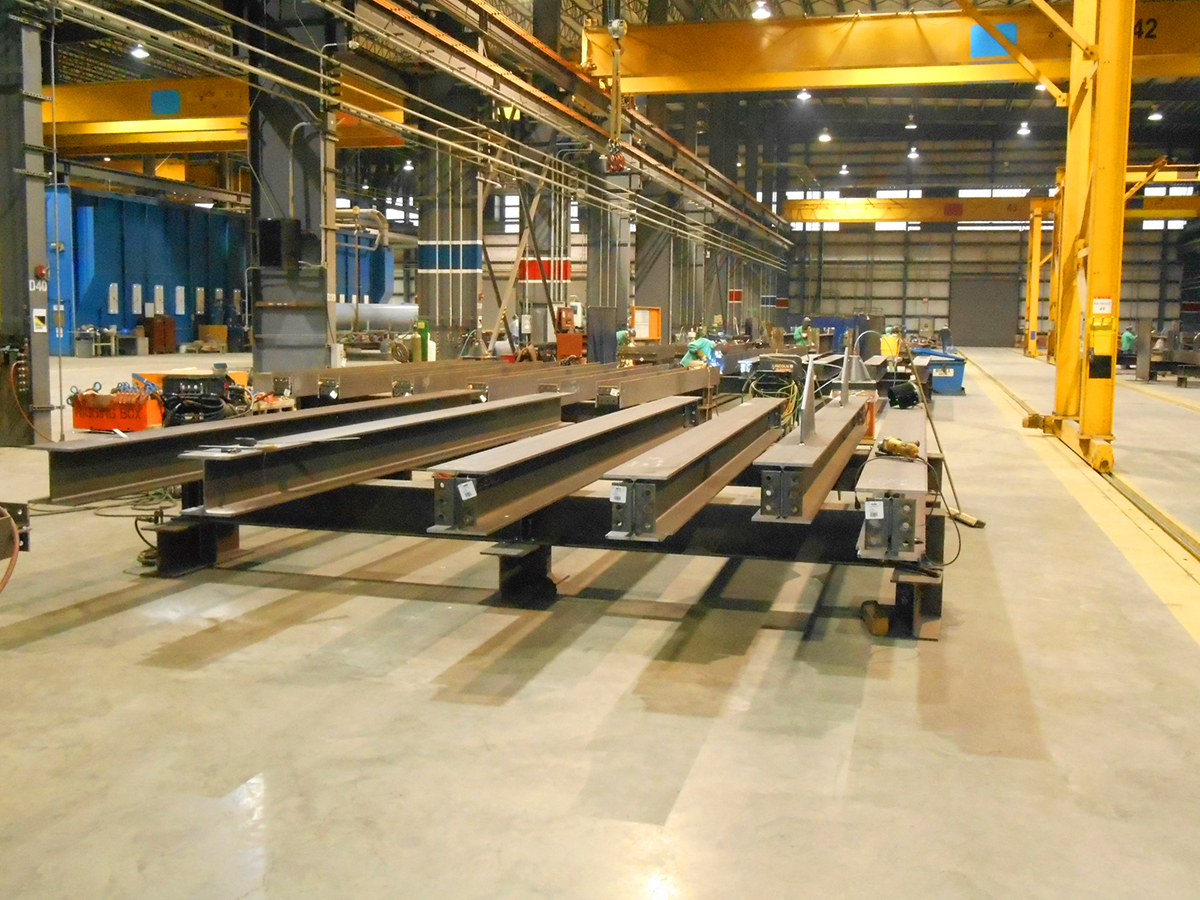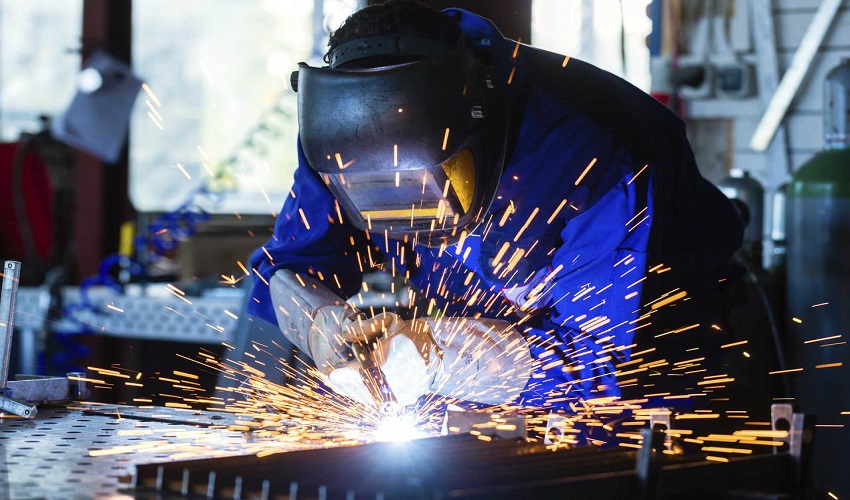Comprehensive Evaluation of Cutting-Edge Techniques in Steel Construction Sector
As the steel manufacture sector remains to develop, the assimilation of sophisticated methods has actually become important for staying competitive and satisfying the demands of contemporary manufacturing requirements. From laser reducing advancements to the use of robotics and 3D printing in steel manufacturing, the landscape of construction methods is swiftly transforming. With each development bringing its very own collection of benefits and obstacles, a comprehensive evaluation of these techniques is paramount for business intending to improve their processes, enhance accuracy, and ultimately, raise the high quality of their steel construction output. In this dynamic industry where innovation plays an essential duty, recognizing the subtleties of these innovative strategies is not simply an alternative yet a requirement for those looking to create in advance in the ever-evolving globe of steel construction.
Laser Reducing Improvements
In the world of steel manufacture, laser reducing innovations have actually revolutionized the precision and effectiveness of metal shaping processes. By harnessing the power of concentrated laser beams, producers can now accomplish unrivaled levels of accuracy when puncturing numerous kinds of metals. This innovation enables complex designs to be implemented with marginal material wastage, making it a cost-efficient remedy for industries needing high precision parts.
Among the crucial benefits of laser cutting is its capability to deal with a vast array of products, consisting of stainless-steel, light weight aluminum, and carbon steel, with convenience. The process creates clean, burr-free edges, getting rid of the demand for added finishing actions. Additionally, the non-contact nature of laser reducing minimizes the threat of material contamination, causing higher high quality final product.
Moreover, laser reducing devices can be programmed to make swift, precise cuts, significantly lowering manufacturing time contrasted to conventional cutting techniques. This speed and precision make laser reducing especially ideal for automation settings where efficiency is extremely important. As modern technology proceeds to advancement, laser cutting is positioned to play a progressively vital duty in the steel construction sector.

CNC Machining Innovations
The evolution of CNC machining modern technologies has actually introduced a brand-new age of accuracy and effectiveness in the steel fabrication industry. Computer Numerical Control (CNC) devices have actually revolutionized steel manufacture by providing unmatched accuracy and repeatability in the manufacturing process. metal fabrication melbourne. Among the key advancements in CNC machining is the integration of advanced software application systems that allow real-time surveillance and adjustments, resulting in boosted productivity and quality assurance
Furthermore, the growth of multi-axis CNC equipments has enabled for the manufacture of complicated steel components with detailed designs that were formerly challenging to create. These devices can execute a broad variety of machining operations, consisting of milling, exploration, transforming, and grinding, all with high degrees of accuracy.
Furthermore, the incorporation of automation and robotics in CNC machining has structured manufacturing procedures, lowered lead times, and reduced the margin of error. This combination of advanced technologies not just increases performance but additionally makes sure regular high quality across all made steel components. To conclude, CNC machining innovations remain to drive advancements in the steel fabrication industry, setting brand-new criteria for precision and performance.
Automated Welding Technologies
Automated welding technologies have transformed the steel manufacture sector, boosting effectiveness and precision in the welding procedure. These sophisticated modern technologies make use of computer-controlled systems to automate the welding procedure, leading to higher performance levels and boosted weld high quality. One of the crucial advantages of automated welding is the capacity to carry out complex welds with regular precision, lowering the probability of errors and rework.
Robot welding systems are at the center of automated welding modern technologies, offering unequaled rate and accuracy. These systems can take care of a large range of welding tasks, from straightforward to elaborate, with ease (Alpha reo). By utilizing advanced sensors and software application, robot welders can adapt to variants in product and joint geometry, guaranteeing an uniform and trustworthy weld
Additionally, automated welding modern technologies improve work environment security by decreasing the direct exposure of human welders to dangerous fumes and intense warmth. As the steel fabrication industry remains to evolve, integrating automated welding innovations will be essential for companies looking to remain affordable and satisfy the expanding needs for premium welded products.
Robotics Integration in Manufacture
Utilizing robotic systems in manufacture processes has become a critical method for improving efficiency and accuracy in modern-day production atmospheres. Robotics assimilation in steel fabrication offers a myriad of benefits, my link consisting of enhanced productivity, boosted quality control, and enhanced safety and security steps. These innovative robot systems are outfitted with innovative sensors and programs abilities, permitting them to carry out detailed tasks with a high degree of precision and repeatability.
One of the vital benefits of robotics combination in steel fabrication is the ability to automate repeated jobs, such as material handling, reducing, welding, and assembly processes. This not just speeds up manufacturing cycles yet additionally minimizes the risk of human mistake, causing greater general item high quality. In addition, robots can run 24/7, substantially improving manufacturing outcome and meeting limited project deadlines.

3D Printing in Steel Production
Having transformed the steel fabrication sector through robotics integration, the burgeoning exploration of 3D printing in steel manufacturing is poised to more advancement the world of contemporary production strategies. 3D printing, also called additive manufacturing, supplies unprecedented layout freedom and intricacy, enabling the creation of complex steel frameworks that were formerly unattainable through standard production techniques. By utilizing computer-aided layout (CAD) software application, makers informative post can precisely regulate the layer-by-layer deposition of steel material, causing get rid of enhanced geometries and functionalities.
One of the crucial advantages of 3D printing in steel production is its capability to minimize material waste significantly. Unlike subtractive production processes where excess product is trimmed away, 3D printing just makes use of the required amount of steel required for the final component. This performance not just leads to cost savings however additionally lines up with sustainable production practices by decreasing environmental impact.
In addition, 3D printing allows rapid prototyping and modification, enabling the manufacturing of little batches of intricate steel parts with short preparations. As the technology continues to develop and end up being much more available, its combination into mainstream steel manufacture procedures is expected to drive innovation and effectiveness across the industry.
Conclusion
Finally, the steel construction sector has actually seen significant developments in strategies such as laser cutting, CNC machining, automated welding, robotics combination, and 3D printing. These advanced technologies have actually reinvented the way steel items are made, causing enhanced cost-effectiveness, precision, and performance. Proceeded financial investment in these innovative methods is essential for the sector to remain competitive and satisfy the demands of contemporary manufacturing procedures.
As the steel fabrication industry proceeds to evolve, the combination of cutting-edge techniques has become necessary for staying affordable and satisfying the demands of contemporary manufacturing requirements.One of the vital benefits of laser cutting is its ability to deal with a broad array of materials, consisting of stainless steel, aluminum, and carbon steel, with convenience.Automated welding modern technologies have actually reinvented the steel construction industry, improving efficiency and precision in the welding process.Having actually transformed the steel fabrication market via robotics combination, the burgeoning exploration of 3D printing in steel manufacturing is positioned to further breakthrough the world of contemporary production methods.In conclusion, the steel fabrication sector has actually seen considerable developments in techniques such as laser cutting, CNC machining, automated welding, robotics combination, this article and 3D printing.
Comments on “Best Steel Fabricators Melbourne: Transforming Ideas into Fact”